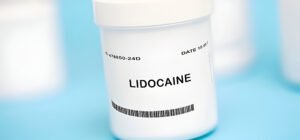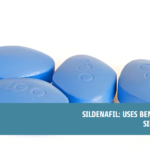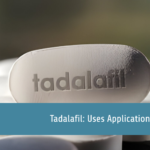What is a Lidocaine?
Lidocaine is a local anaesthetic agent, which is commonly used for local and topical anesthesia. It also has antiarrhythmic and analgesic uses and can be administered prior to tracheal intubation. It causes a temporary numbing effect when used topically.
Lidocaine was first discovered between 1943 and 1946 and went on sale in 1948. It is often combined with epinephrine, which acts as a vasopressor and extends lidocaine’s duration of action. Lidocaine is available in many forms, including creams, gels, liquids, sprays, eye drops, patches, and solutions for injection or infusion. The different formulations of lidocaine are used in a wide variety of superficial and invasive procedures. For example, a lidocaine transdermal patch can be applied to the skin to relieve pain caused by post-herpetic neuralgia.
When used correctly and sparingly, topical lidocaine is generally considered safe. However, misuse, overuse, or overdose can lead to serious problems, including methemoglobinemia, a condition where the blood’s ability to carry oxygen to the body’s tissues is impaired. Systemic exposure to excessive quantities of lidocaine can also result in central nervous system and cardiovascular effects, including dizziness, changes in vision, numbness, tingling, vomiting, and even cardiac arrest.
How Does Lidocaine Work?
Lidocaine’s primary mechanism of action is blocking voltage-gated sodium channels, which decreases the rate of contractions of the heart and raises the depolarization threshold. This prevents or reduces the sensation of pain. It also blocks potassium channels and regulates the concentration of ions inside and outside cells. This changes the transmembrane potential and regulates neuronal excitability.
At the cellular level, lidocaine has been shown to reduce the peak currents of sodium channels and accelerate the deactivation process, thereby reducing neuronal excitability. It also inhibits the release of interleukin-1, an inflammatory mediator that acts on polymorphonuclear granulocytes, and activates phagocytosis, respiratory burst, degranulation, and chemotaxis. Lidocaine has also been found to inhibit the release of glutamate, the main excitatory neurotransmitter in the CNS.
When used as an injectable local anaesthetic, lidocaine’s onset of action is rapid, taking less than two minutes on average. The effects of a single dose can last anywhere from half an hour to three hours.
How to Use Lidocaine Topical Cream?

Lidocaine topical cream is available over the counter or on prescription. It comes in various forms and strengths. The appropriate application method may differ depending on the specific product. Always read and follow the instructions provided with the cream or follow the advice of a doctor or pharmacist.
In general, lidocaine cream is applied directly to the skin. The area to be treated should be cleaned and dried beforehand. A thin layer of cream is then applied two or three times daily, or as directed by a healthcare professional. The effects of lidocaine cream can take between 25 to 40 minutes to take effect.
Some products require the application of a waterproof dressing to keep the cream in place. The dressing should be left in place for 30 to 60 minutes, and then removed before the procedure.
Do not apply lidocaine cream to the eyes, ears, nose, mouth, genitals, anus or any open wounds, unless directed by a doctor. Wash your hands immediately after use. Do not use more cream than recommended, as this may cause side effects. Seek medical advice immediately if any side effects occur.
What are the Side Effects of Lidocaine?
When used topically, lidocaine is generally considered safe, and many people experience no side effects at all. Mild side effects may include:
- Itching or tingling at the site of the application
- Redness or mild swelling of the skin
- Paler skin than usual
If any of these mild effects persist or become uncomfortable, stop using the cream and consult a doctor or pharmacist.
In rare cases, more serious allergic reactions can occur. These require immediate medical attention, and signs to look out for include:
- Swelling of the face, lips, throat, or tongue
- Difficulty breathing, a tight throat or feeling like you’re choking.
- Skin, tongue, or lips turning blue, grey, or pale.
- Confusion, drowsiness, or dizziness
- A rash
Other serious side effects may include low blood pressure, and cardiovascular and central nervous system effects, such as changes in vision, irregular heartbeat, shallow breathing, seizures, and loss of consciousness.
Lidocaine should not be used on broken or infected skin, or if you have certain heart conditions, liver disease or a blood disorder called methemoglobinemia. Women who are pregnant or breastfeeding should exercise caution when using lidocaine and consult a doctor first.
What are the Warning and Precautions of the lidocaine?

Here are some important warnings and precautions to be aware of when using lidocaine:
Lidocaine should not be used to relieve teething pain in children. The FDA recommends following the American Academy of Pediatrics’ guidance on treating teething pain, which involves using a teething ring chilled in the fridge or gently rubbing the gums with your finger.
Lidocaine can cause serious side effects, including seizures, loss of consciousness and cardiac arrest, if too much of the medicine is absorbed into the blood. This can happen if large amounts are applied, or if the skin to which it is applied is broken, blistered, or burnt. Do not cover the area to which lidocaine is applied, unless directed to do so by a doctor.
Lidocaine may interact with other medications, including heart rhythm medicines, so check with a doctor or pharmacist if you’re already taking prescribed drugs.
Tell your doctor or pharmacist if you have ever had methemoglobinemia – a blood disorder – or if there is a family history of the condition.
Do not use lidocaine if you are allergic to it, or other amide-type anesthetics.
Contact a poison control centre or seek immediate medical attention in the event of an overdose. Symptoms of overdose may include dizziness, vomiting, irregular heartbeat, and seizures.
Keep lidocaine out of the sight and reach of children and store it away from moisture and heat.
How Does Lidocaine Interact with Other Medicines?
Lidocaine has been reported to interact with many other drugs, increasing the risk of adverse reactions. Some sources refer to at least 297 drugs known to interact with lidocaine. Here are some of the types of drugs that can interact with lidocaine:
- Anti-arrhythmia medications, including amiodarone, propafenone, sotalol, tocainide and mexiletine.
- Other local anaesthetics, such as bupivacaine
- Anesthetics, including propofol.
- Antidepressants, including SSRIs like fluoxetine (Prozac) and clomipramine (Anafranil)
- Antibiotics, including erythromycin, clarithromycin, and ciprofloxacin.
- Anti-hisamines, such as cimetidine
- Beta blockers, including propranolol.
- Calcium channel blockers, such as verapamil and amiodarone
- Cholesterol-lowering drugs, for example, atorvastatin (Lipitor) and simvastatin (Zocar).
Many of these drugs interfere with lidocaine’s metabolism by inhibiting the liver enzyme Cytochrome-P450 3A4 (CYP3A4), which slows the rate at which lidocaine is eliminated from the body. Other drugs may affect the heart rate and rhythm, causing additive side effects.
Some medications should be discontinued one to two weeks before any procedures involving the use of lidocaine, to minimize the risk of drug interactions. These include drugs that are metabolized by the cytochrome P450 system, which could increase the toxicity associated with subcutaneous lidocaine infusion.
You should always consult a healthcare professional before taking any new medication, to ensure it’s suitable in combination with lidocaine.
What happens if I miss a dose of Lidocaine?
If you miss a dose of lidocaine cream, you should apply it as soon as you remember, unless it’s almost time for your next dose. In this case, you should skip the missed dose and continue with the next one as normal. Do not double the dose to catch up.
If you’re using lidocaine in patch form, remove the protective liner and apply it to the most painful area of the skin, as directed by your doctor. The patch can usually be worn for up to 8 or 12 hours. Follow the instructions carefully, and ensure the area is clean and dry.
Used patches still contain medication, so they should be folded with the sticky sides together and discarded safely, out of the reach of children and pets.
What happens if I overdose on Lidocaine?
Lidocaine is generally considered safe when used correctly and sparingly. However, misuse, overuse, or overdose can lead to serious problems, including death.
The most common ways to overdose on lidocaine are by accidental injection of an excessive dose, topical application over a large area of the body, or ingestion of a topical preparation by children. Systemic toxicity can occur when the body absorbs large amounts of lidocaine very quickly, and symptoms can vary in severity.
The early symptoms of lidocaine overdose are linked to CNS excitation and include circumoral numbness, tongue tingling, dizziness, blurred vision, restlessness, and auditory disturbances. This may lead to muscle twitches, convulsions, and loss of consciousness. In severe cases, there may be respiratory depression, cardiovascular disturbances, and cardiac arrest.
Lidocaine overdose is a medical emergency and requires immediate treatment. The outcomes are often dependent on how quickly treatment is administered. Anyone who thinks they have overdosed on lidocaine should seek medical help immediately or call the relevant poison control centre.



